NISSAN LEAF 2017 1.G Dismantling Guide
Manufacturer: NISSAN, Model Year: 2017, Model line: LEAF, Model: NISSAN LEAF 2017 1.GPages: 48, PDF Size: 1.98 MB
Page 21 of 48
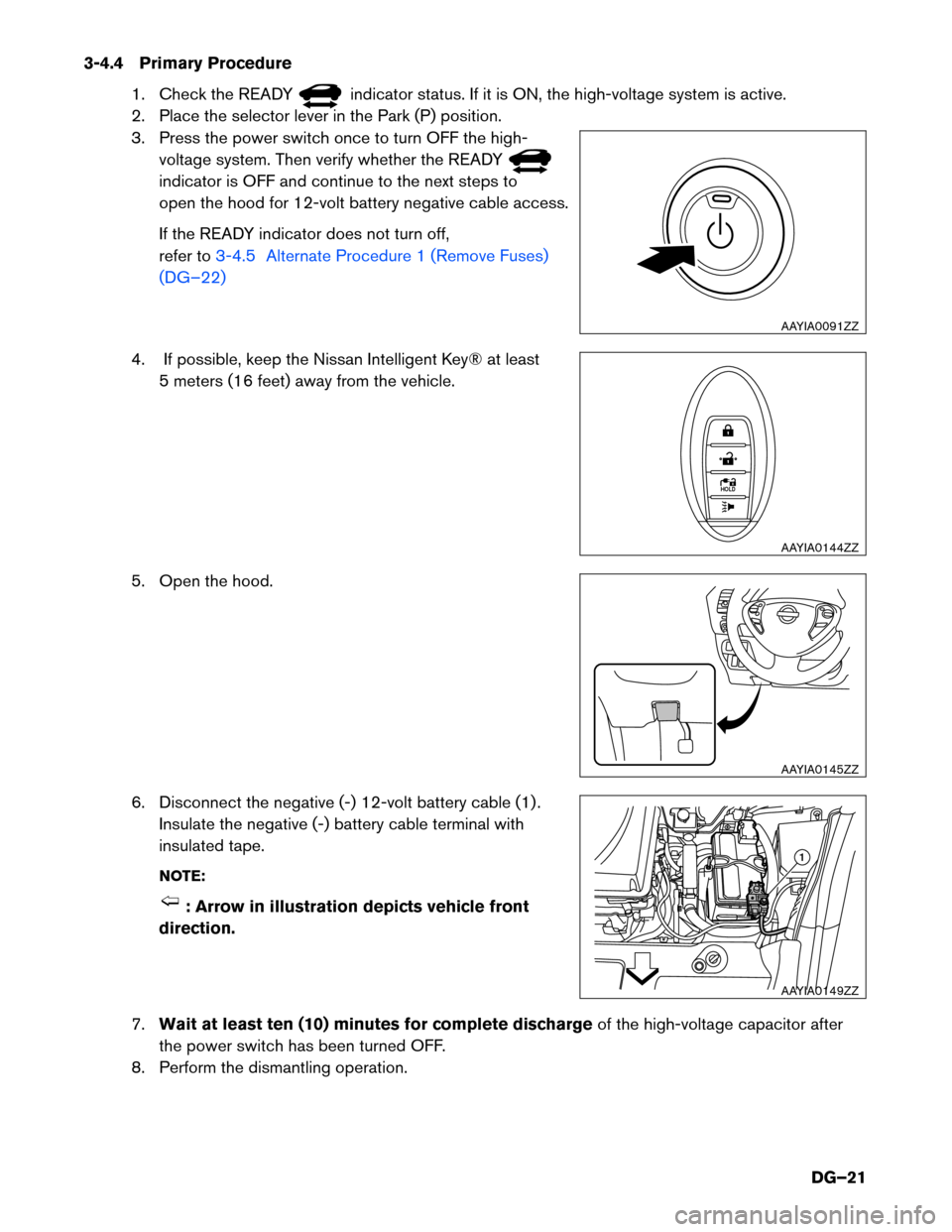
3-4.4 Primary Procedure
1. Check the READY indicator status. If it is ON, the high-voltage system is active.
2.
Place the selector lever in the Park (P) position.
3. Press the power switch once to turn OFF the high- voltage system. Then verify whether the READY indicator is OFF and continue to the next steps to
open
the hood for 12-volt battery negative cable access.
If the READY indicator does not turn off,
refer to 3-4.5 Alternate Procedure 1 (Remove Fuses)
(DG–22)
4. If possible, keep the Nissan Intelligent Key® at least 5
meters (16 feet) away from the vehicle.
5. Open the hood.
6. Disconnect the negative (-) 12-volt battery cable (1) . Insulate the negative (-) battery cable terminal with
insulated tape.
NOTE: : Arrow in illustration depicts vehicle front
direction.
7. Wait
at least ten (10) minutes for complete discharge of the high-voltage capacitor after
the power switch has been turned OFF.
8. Perform the dismantling operation. AAYIA0091ZZ
HOLD
AAYIA0144ZZ
AAYIA0145ZZ
1
AAYIA0149ZZ
DG–21
Page 22 of 48
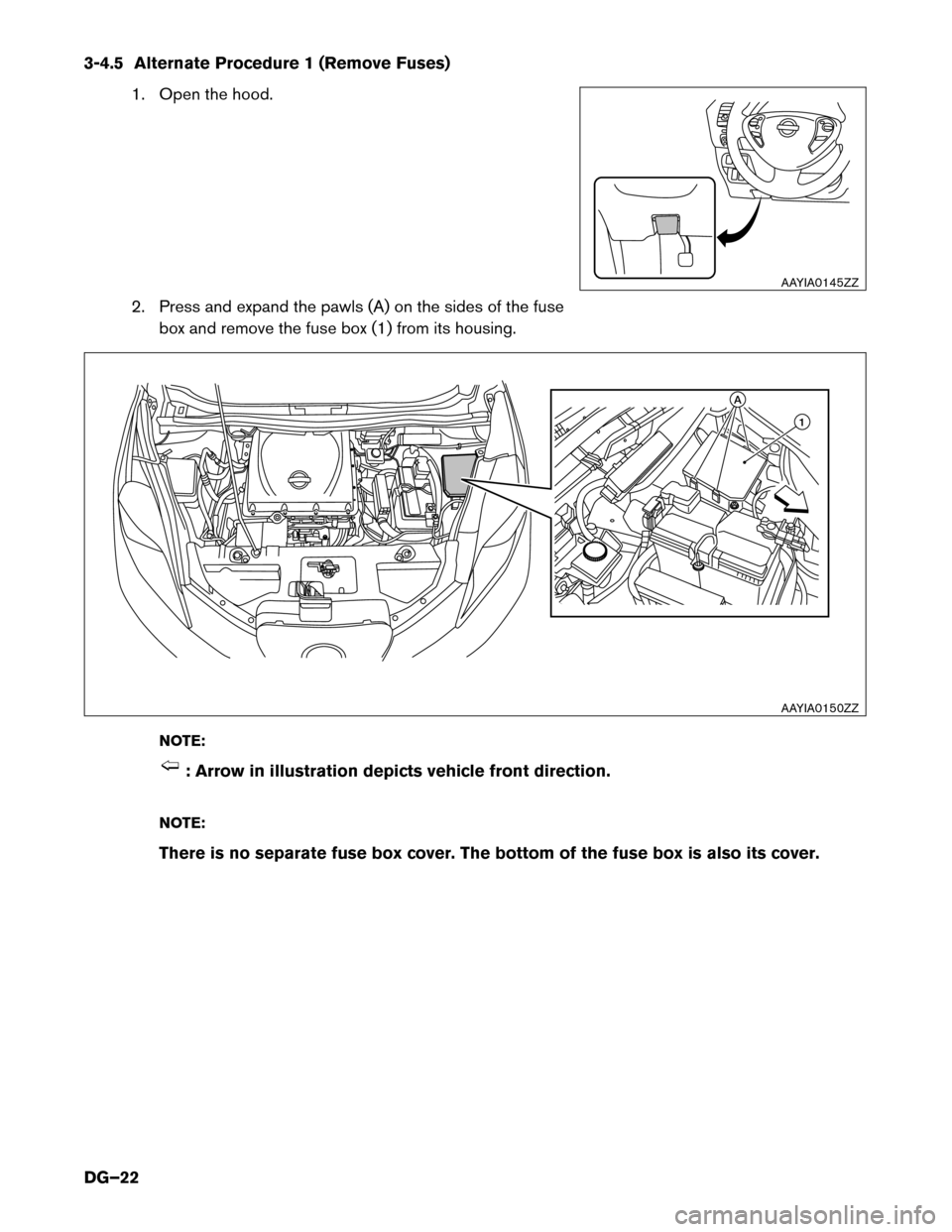
3-4.5 Alternate Procedure 1 (Remove Fuses)
1. Open the hood.
2. Press and expand the pawls (A) on the sides of the fuse box and remove the fuse box (1) from its housing.
NOTE: : Arrow in illustration depicts vehicle front direction.
NO
TE:
There is no separate fuse box cover. The bottom of the fuse box is also its cover. AAYIA0145ZZ
1A
AAYIA0150ZZ
DG–22
Page 23 of 48

3. Remove the following fuses:
a. F/S1 RLY Fuse (F24 F/S1 RLY 15A)
b. VCM Fuse (F3 VCM 20A)
4. Remove the fuse box cover and remove the 20A VCM fuse. NOTE: : Arrow in illustration depicts vehicle front direction.
5.
If you cannot identify the above fuses, remove all fuses in the fuse boxes. F24 F/S1 RLY 15A
(Blue)F3 VCM 20A
(Y
ellow)
AAYIA0053GB20A VCM (Yellow)
AAYIA0054GB
DG–23
Page 24 of 48
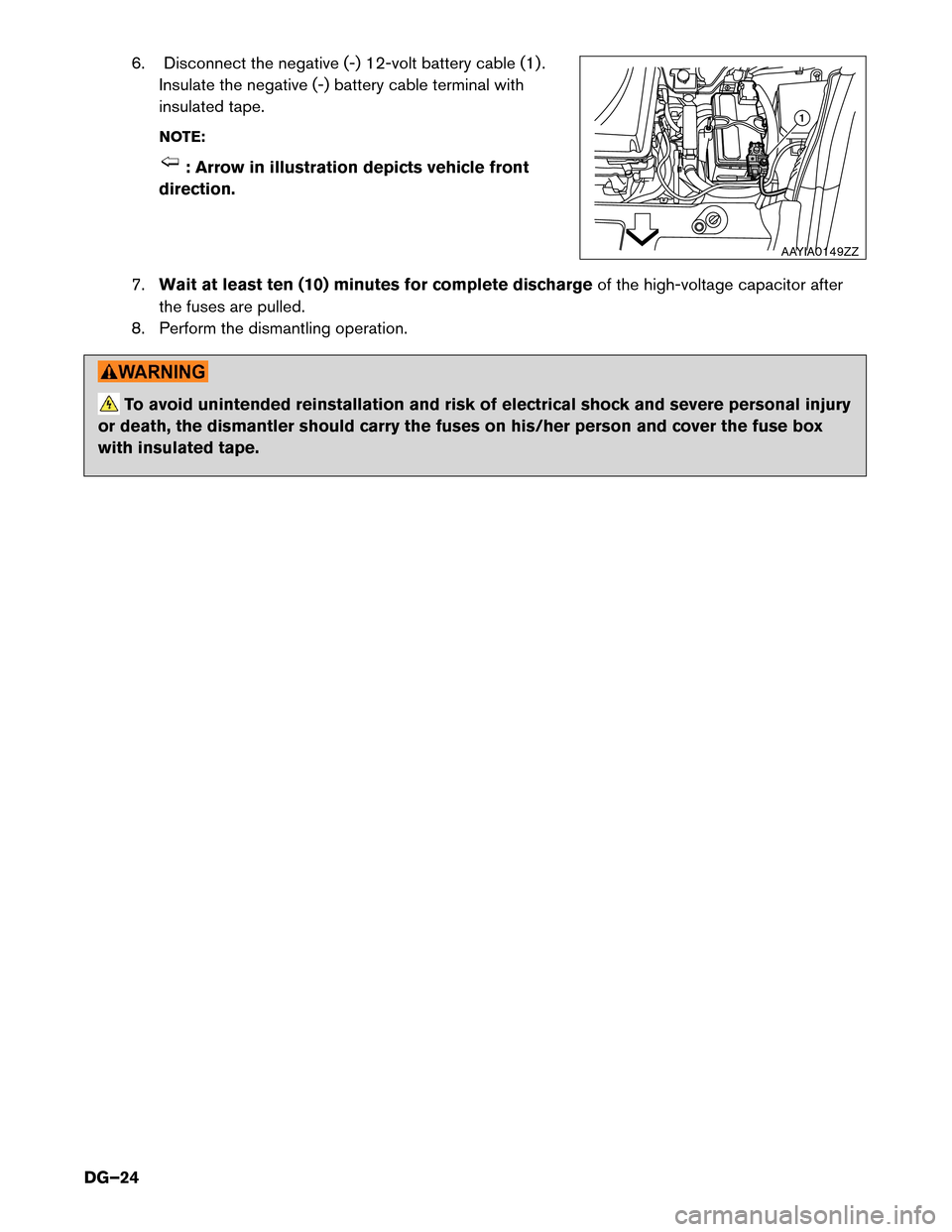
6. Disconnect the negative (-) 12-volt battery cable (1) .
Insulate the negative (-) battery cable terminal with
insulated tape.
NOTE: : Arrow in illustration depicts vehicle front
direction.
7. Wait
at least ten (10) minutes for complete discharge of the high-voltage capacitor after
the fuses are pulled.
8. Perform the dismantling operation. To avoid unintended reinstallation and risk of electrical shock and severe personal injury
or
death, the dismantler should carry the fuses on his/her person and cover the fuse box
with insulated tape. 1
AAYIA0149ZZ
DG–24
Page 25 of 48
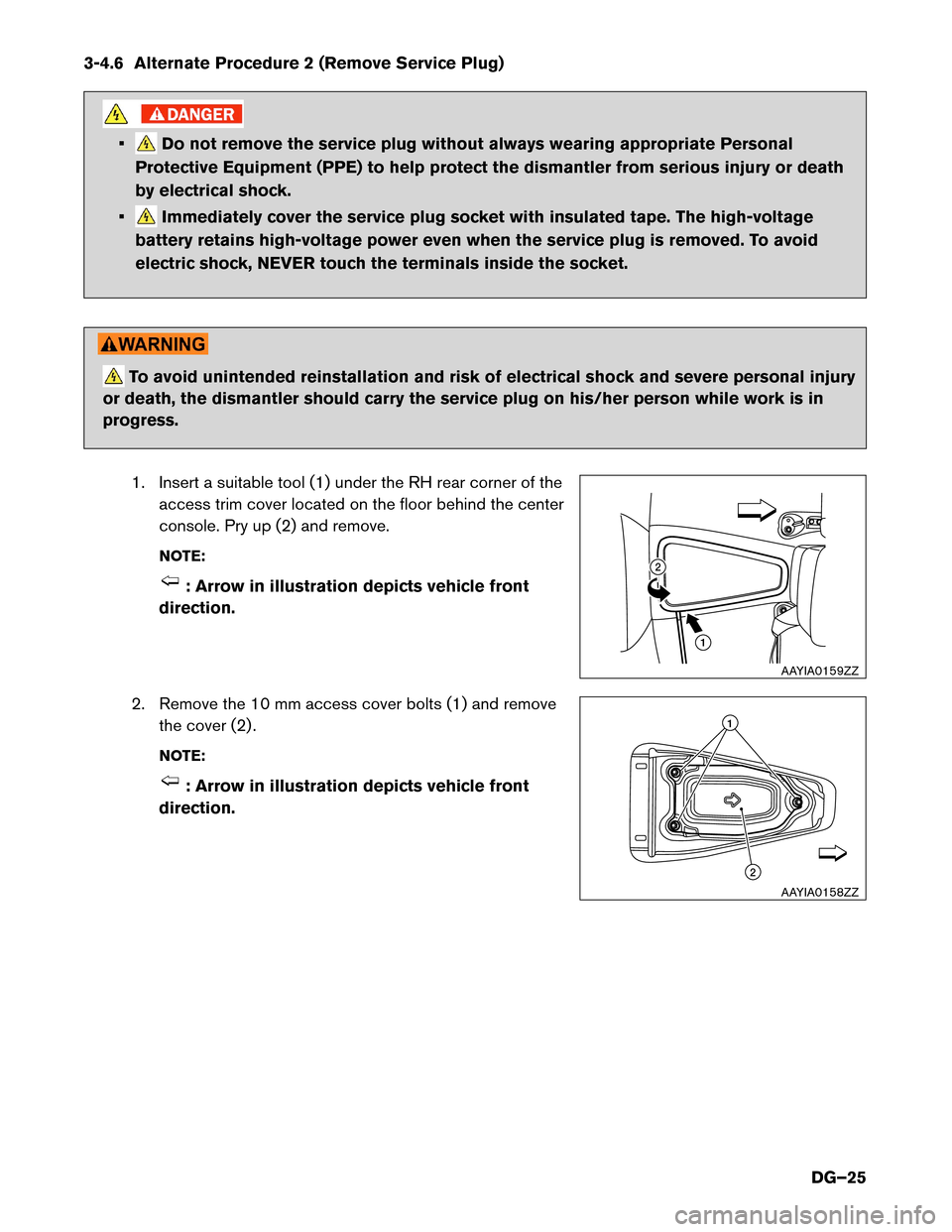
3-4.6 Alternate Procedure 2 (Remove Service Plug)
• Do not remove the service plug without always wearing appropriate Personal
Protective Equipment (PPE) to help protect the dismantler from serious injury or death
by electrical shock.
• Immediately cover the service plug socket with insulated tape. The high-voltage
battery
retains high-voltage power even when the service plug is removed. To avoid
electric shock, NEVER touch the terminals inside the socket. To avoid unintended reinstallation and risk of electrical shock and severe personal injury
or
death, the dismantler should carry the service plug on his/her person while work is in
progress.
1. Insert a suitable tool (1) under the RH rear corner of theaccess trim cover located on the floor behind the center
console. Pry up (2) and remove.
NOTE: : Arrow in illustration depicts vehicle front
direction.
2.
Remove the 10 mm access cover bolts (1) and remove
the cover (2) .
NOTE: : Arrow in illustration depicts vehicle front
direction. 12
AAYIA0159ZZ
1
2
AAYIA0158ZZ
DG–25
Page 26 of 48
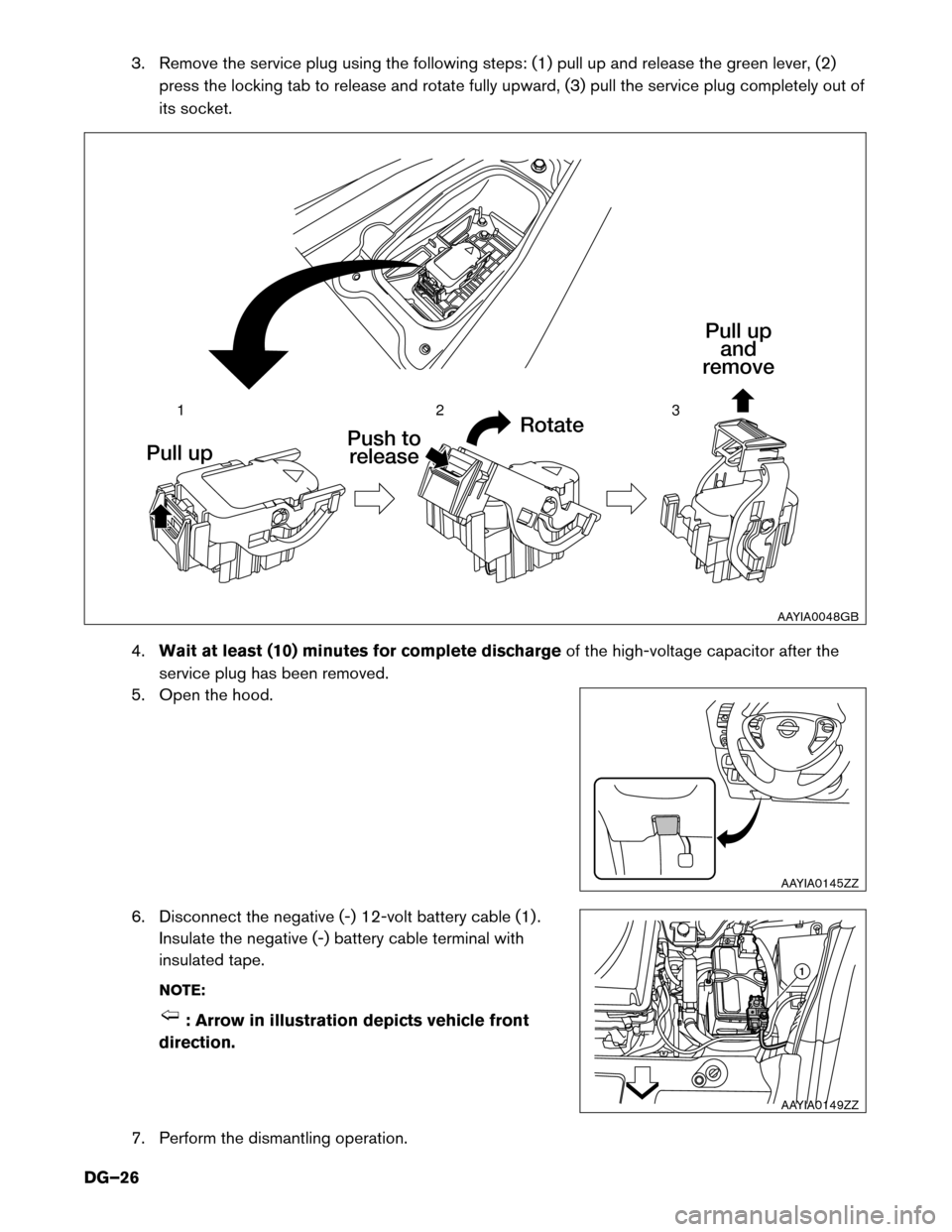
3. Remove the service plug using the following steps: (1) pull up and release the green lever, (2)
press the locking tab to release and rotate fully upward, (3) pull the service plug completely out of
its socket.
4. Wait at least (10) minutes for complete discharge of the high-voltage capacitor after the
service plug has been removed.
5. Open the hood.
6. Disconnect the negative (-) 12-volt battery cable (1) . Insulate the negative (-) battery cable terminal with
insulated tape.
NOTE: : Arrow in illustration depicts vehicle front
direction.
7.
Perform the dismantling operation. 1
2
3
Pull up Rotate
Push to
release Pull up
and
remove
AAYIA0048GB AAYIA0145ZZ
1
AAYIA0149ZZ
DG–26
Page 27 of 48
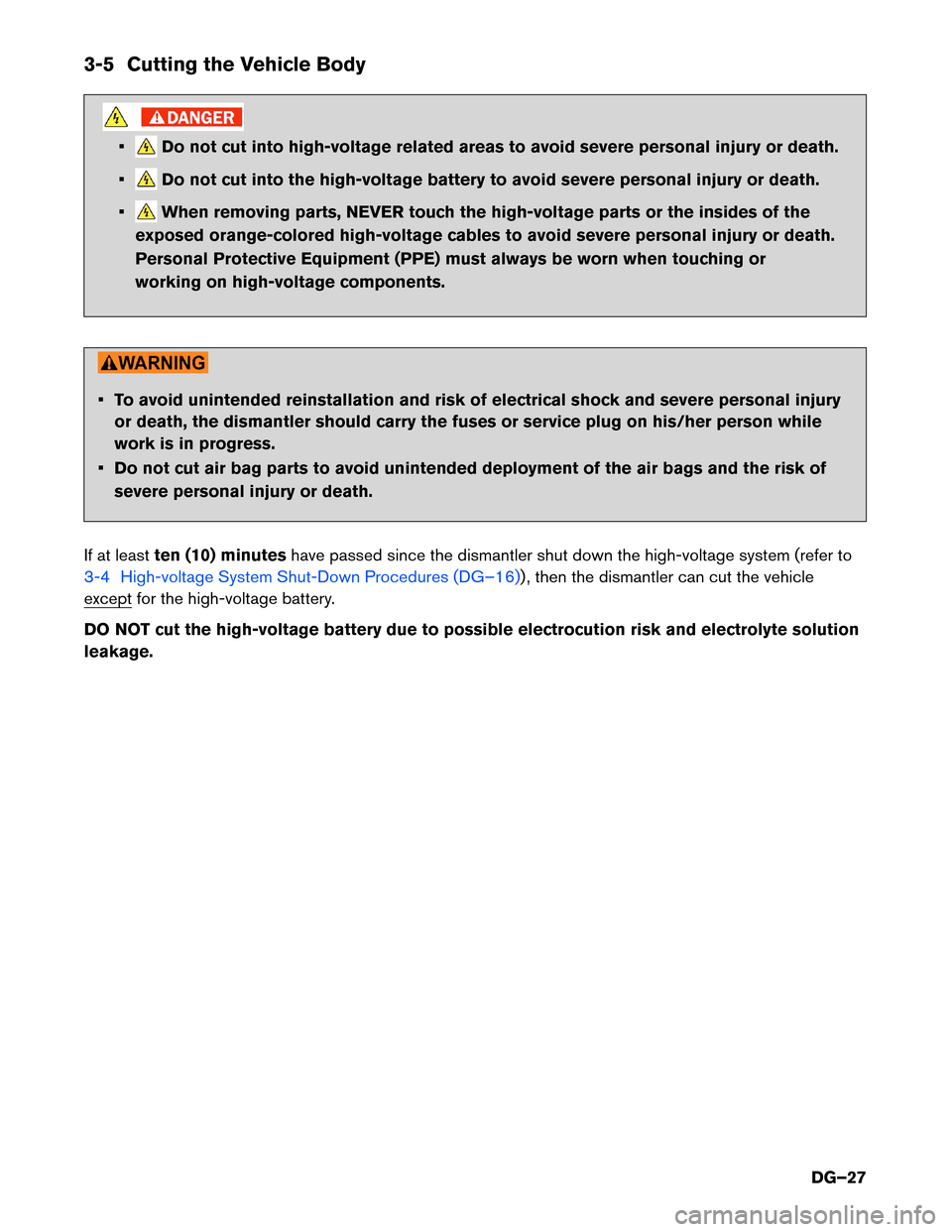
3-5 Cutting the Vehicle Body
• Do not cut into high-voltage related areas to avoid severe personal injury or death.
• Do not cut into the high-voltage battery to avoid severe personal injury or death.
• When removing parts, NEVER touch the high-voltage parts or the insides of the
exposed orange-colored high-voltage cables to avoid severe personal injury or death.
Personal Protective Equipment (PPE) must always be worn when touching or
working on high-voltage components. • To avoid unintended reinstallation and risk of electrical shock and severe personal injury
or
death, the dismantler should carry the fuses or service plug on his/her person while
work is in progress.
• Do not cut air bag parts to avoid unintended deployment of the air bags and the risk of severe personal injury or death.
If at least ten (10) minutes have passed since the dismantler shut down the high-voltage system (refer to
3-4 High-voltage System Shut-Down Procedures (DG–16)) , then the dismantler can cut the vehicle
except
for the high-voltage battery. DO NOT cut the high-voltage battery due to possible electrocution risk and electrolyte solution
leakage.
DG–27
Page 28 of 48
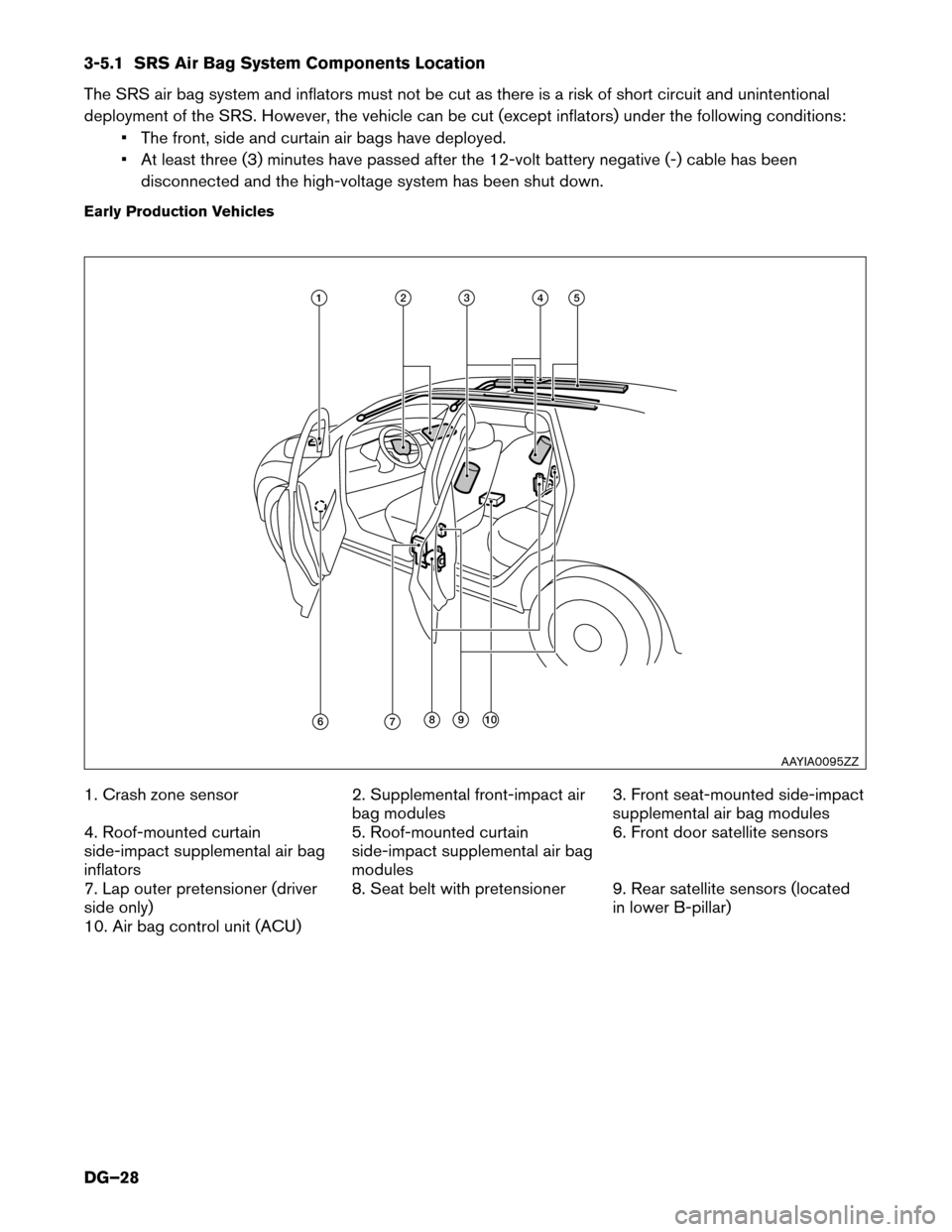
3-5.1 SRS Air Bag System Components Location
The
SRS air bag system and inflators must not be cut as there is a risk of short circuit and unintentional
deployment of the SRS. However, the vehicle can be cut (except inflators) under the following conditions: • The front, side and curtain air bags have deployed.
• At least three (3) minutes have passed after the 12-volt battery negative (-) cable has beendisconnected and the high-voltage system has been shut down.
Early Production Vehicles
1. Crash zone sensor 2. Supplemental front-impact air
bag modules 3. Front seat-mounted side-impact
supplemental air bag modules
4. Roof-mounted curtain
side-impact supplemental air bag
inflators 5. Roof-mounted curtain
side-impact supplemental air bag
modules6. Front door satellite sensors
7. Lap outer pretensioner (driver
side only) 8. Seat belt with pretensioner 9. Rear satellite sensors (located
in lower B-pillar)
10. Air bag control unit (ACU) 11 2 3 4 5
6 7 8 9 10
AAYIA0095ZZ
DG–28
Page 29 of 48
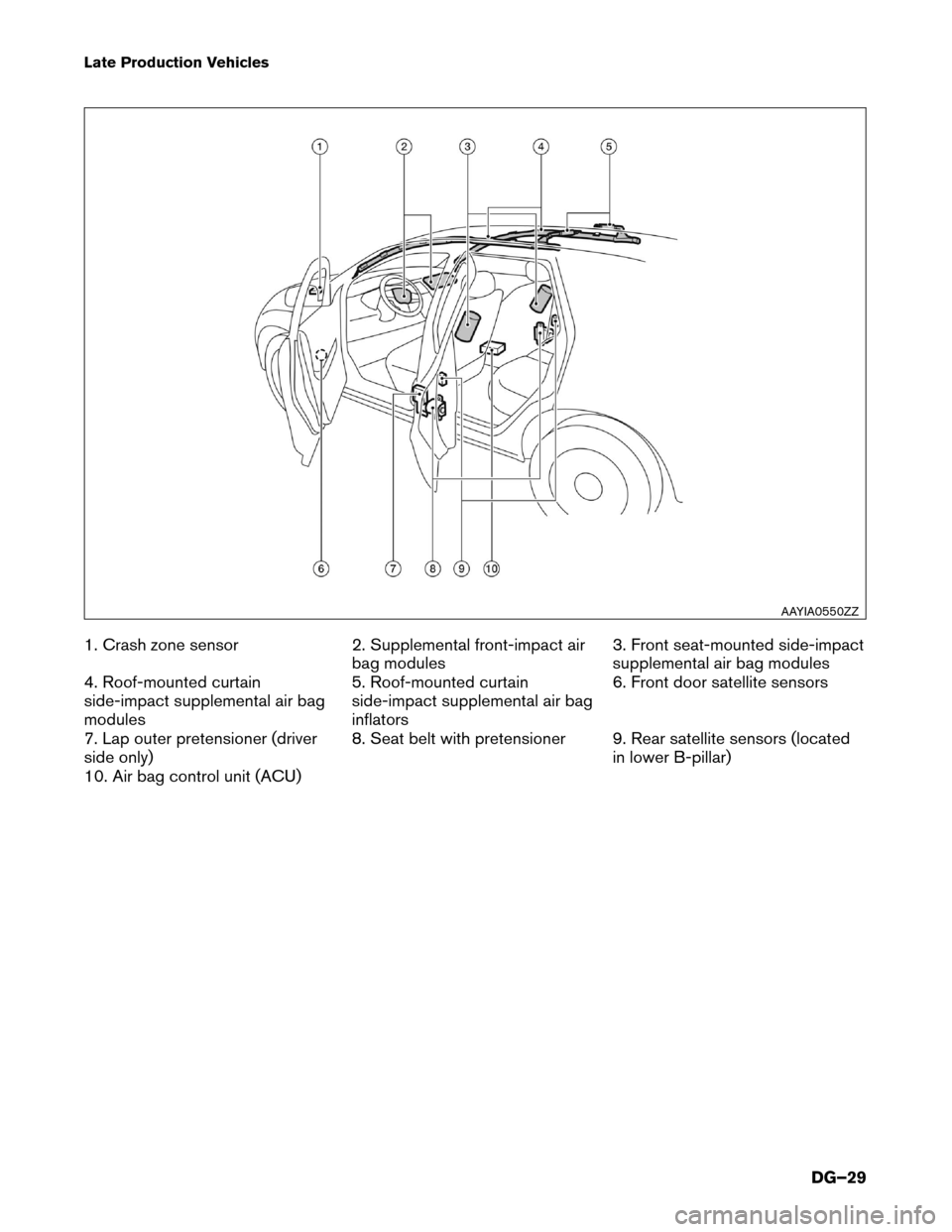
Late Production Vehicles
1.
Crash zone sensor 2. Supplemental front-impact air
bag modules 3. Front seat-mounted side-impact
supplemental air bag modules
4. Roof-mounted curtain
side-impact supplemental air bag
modules 5. Roof-mounted curtain
side-impact supplemental air bag
inflators6. Front door satellite sensors
7. Lap outer pretensioner (driver
side only) 8. Seat belt with pretensioner 9. Rear satellite sensors (located
in lower B-pillar)
10. Air bag control unit (ACU) AAYIA0550ZZ
DG–29
Page 30 of 48
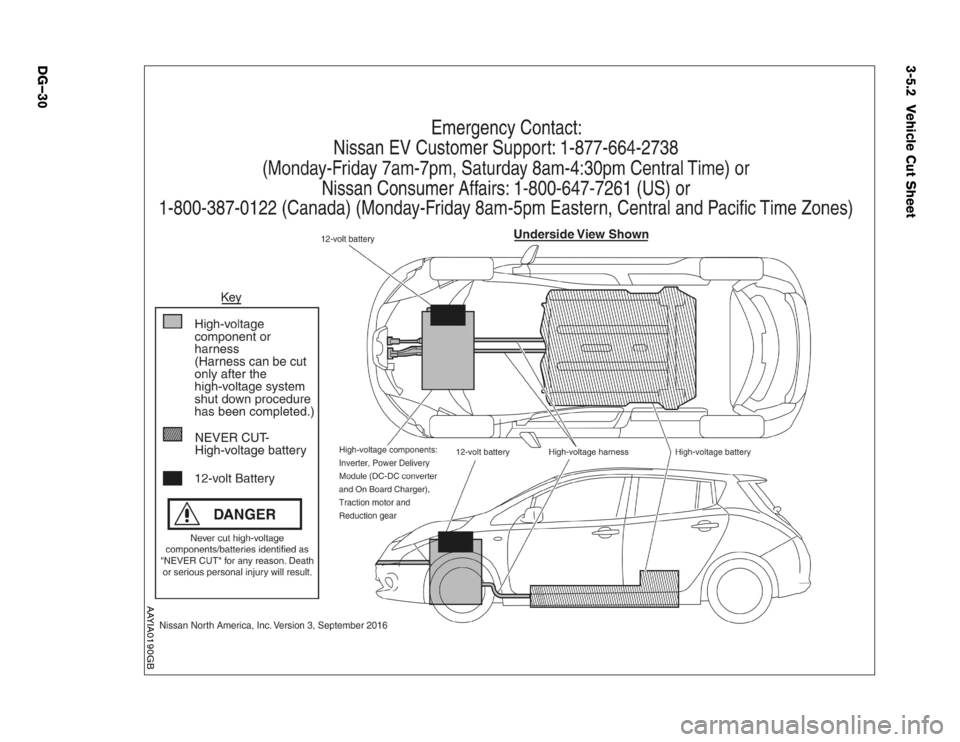
3-5.2 Vehicle Cut Sheet
AAYIA0190GB
DG–30